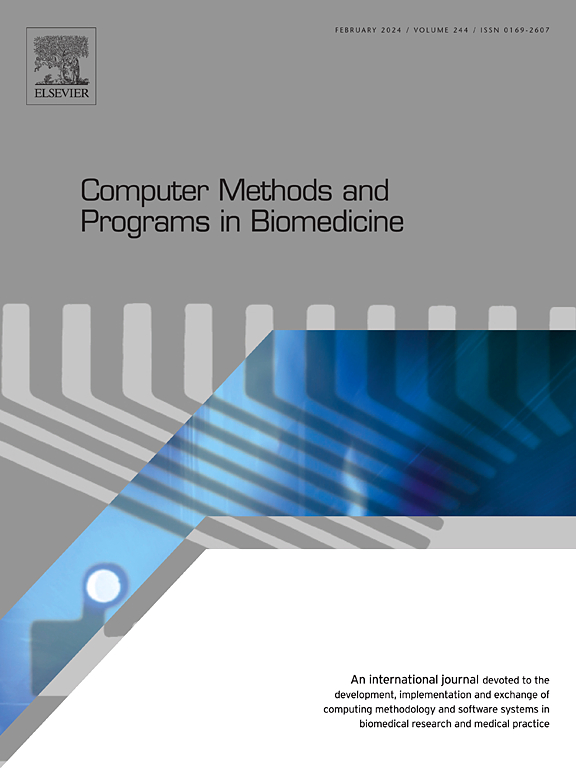TAC-ECG:一种基于跨模态对比学习和低秩卷积适配器的任务自适应心电图分类方法
IF 4.9
2区 医学
Q1 COMPUTER SCIENCE, INTERDISCIPLINARY APPLICATIONS
引用次数: 0
摘要
背景与目的:心血管疾病是危害人类健康的主要疾病之一。研究人员提出了许多基于深度学习的心电图自动分析方法,取得了令人鼓舞的结果。然而,现有的许多方法仅限于特定任务的模型训练,在面对新的心电分类任务时需要重新训练或完全微调,因此在临床应用中缺乏灵活性。方法:在本研究中,我们提出了一种基于跨模态对比学习和低秩卷积适配器的心电任务自适应分类方法(TAC-ECG)。TAC-ECG包括两个主要阶段。在第一阶段,受对比语言-图像预训练的启发,我们设计了对比ECG-文本预训练(CETP)来预训练一个鲁棒的心电编码器。在第二阶段,将预先训练好的心电编码器冻结并与轻量级插件低秩卷积适配器(LRC-Adapter)集成,形成可扩展的心电分类模型。冷冻编码器从心电信号中提取更多的判别特征,而LRC-Adapter则实现特定任务的自适应。对于不同的心电分类任务,TAC-ECG只需要训练LRC-Adapter。该机制使TAC-ECG能够高效地执行不同的心电分类任务,与传统的全微调方法相比,显著降低了多任务场景下的资源消耗和部署成本。结果:我们使用六种不同的网络架构作为心电编码器进行了广泛的实验。具体而言,我们在CPSC2018、Cinc2017、pdb - xl和Chapman四个数据集上进行了ECG分类实验,分别针对9类、3类、5类和4类进行分类。与完全微调方法相比,TAC-ECG仅使用约3%的可训练参数和约25%的总参数获得了极具竞争力的结果。这些结果证明了TAC-ECG方法的有效性和实用性。结论:TAC-ECG为心电分类提供了一种灵活高效的方法,可快速适应多种任务,提高临床诊断的实用性。本文章由计算机程序翻译,如有差异,请以英文原文为准。
TAC-ECG: A task-adaptive classification method for electrocardiogram based on cross-modal contrastive learning and low-rank convolutional adapter
Background and Objective:
Cardiovascular diseases are one of the major health threats to humans. Researchers have proposed numerous deep learning-based methods for the automatic analysis of electrocardiogram (ECG), achieving encouraging results. However, many existing methods are limited to task-specific model training and require retraining or full fine-tuning when confronted with a new ECG classification task, thus lacking flexibility in clinical applications.
Methods:
In this study, we propose a Task-Adaptive Classification method for ECG (TAC-ECG) based on cross-modal contrastive learning and low-rank convolutional adapters. TAC-ECG comprises two main phases. In the first phase, inspired by the Contrastive Language-Image Pre-training, we design the Contrastive ECG-Text Pre-training (CETP) to pre-train a robust ECG encoder. In the second phase, the pre-trained ECG encoder is frozen and integrated with a lightweight plug-in, the Low-Rank Convolutional Adapter (LRC-Adapter), forming an extensible ECG classification model. The frozen encoder extracts more discriminative features from the ECG signal, while the LRC-Adapter enables task-specific adaptation. For diverse ECG classification tasks, TAC-ECG only requires training the LRC-Adapter. This mechanism enables TAC-ECG to efficiently perform different ECG classification tasks, significantly reducing resource consumption and deployment costs in multi-tasking scenarios compared to traditional fully fine-tuned methods.
Results:
We conducted extensive experiments using six different network architectures as ECG encoders. Specifically, we performed ECG classification experiments on four datasets: CPSC2018, Cinc2017, PTB-XL, and Chapman, targeting 9-category, 3-category, 5-category, and 4-category classifications respectively. The TAC-ECG achieved highly competitive results using only approximately 3% of the trainable parameters and approximately 25% of the total parameters compared to the fully fine-tuned method. These results demonstrates the effectiveness and practicality of the TAC-ECG method.
Conclusion:
The TAC-ECG offers a flexible and efficient method for ECG classification, enabling rapid adaptation to diverse tasks and enhancing clinical diagnostic practicality.
求助全文
通过发布文献求助,成功后即可免费获取论文全文。
去求助
来源期刊

Computer methods and programs in biomedicine
工程技术-工程:生物医学
CiteScore
12.30
自引率
6.60%
发文量
601
审稿时长
135 days
期刊介绍:
To encourage the development of formal computing methods, and their application in biomedical research and medical practice, by illustration of fundamental principles in biomedical informatics research; to stimulate basic research into application software design; to report the state of research of biomedical information processing projects; to report new computer methodologies applied in biomedical areas; the eventual distribution of demonstrable software to avoid duplication of effort; to provide a forum for discussion and improvement of existing software; to optimize contact between national organizations and regional user groups by promoting an international exchange of information on formal methods, standards and software in biomedicine.
Computer Methods and Programs in Biomedicine covers computing methodology and software systems derived from computing science for implementation in all aspects of biomedical research and medical practice. It is designed to serve: biochemists; biologists; geneticists; immunologists; neuroscientists; pharmacologists; toxicologists; clinicians; epidemiologists; psychiatrists; psychologists; cardiologists; chemists; (radio)physicists; computer scientists; programmers and systems analysts; biomedical, clinical, electrical and other engineers; teachers of medical informatics and users of educational software.
 求助内容:
求助内容: 应助结果提醒方式:
应助结果提醒方式:


